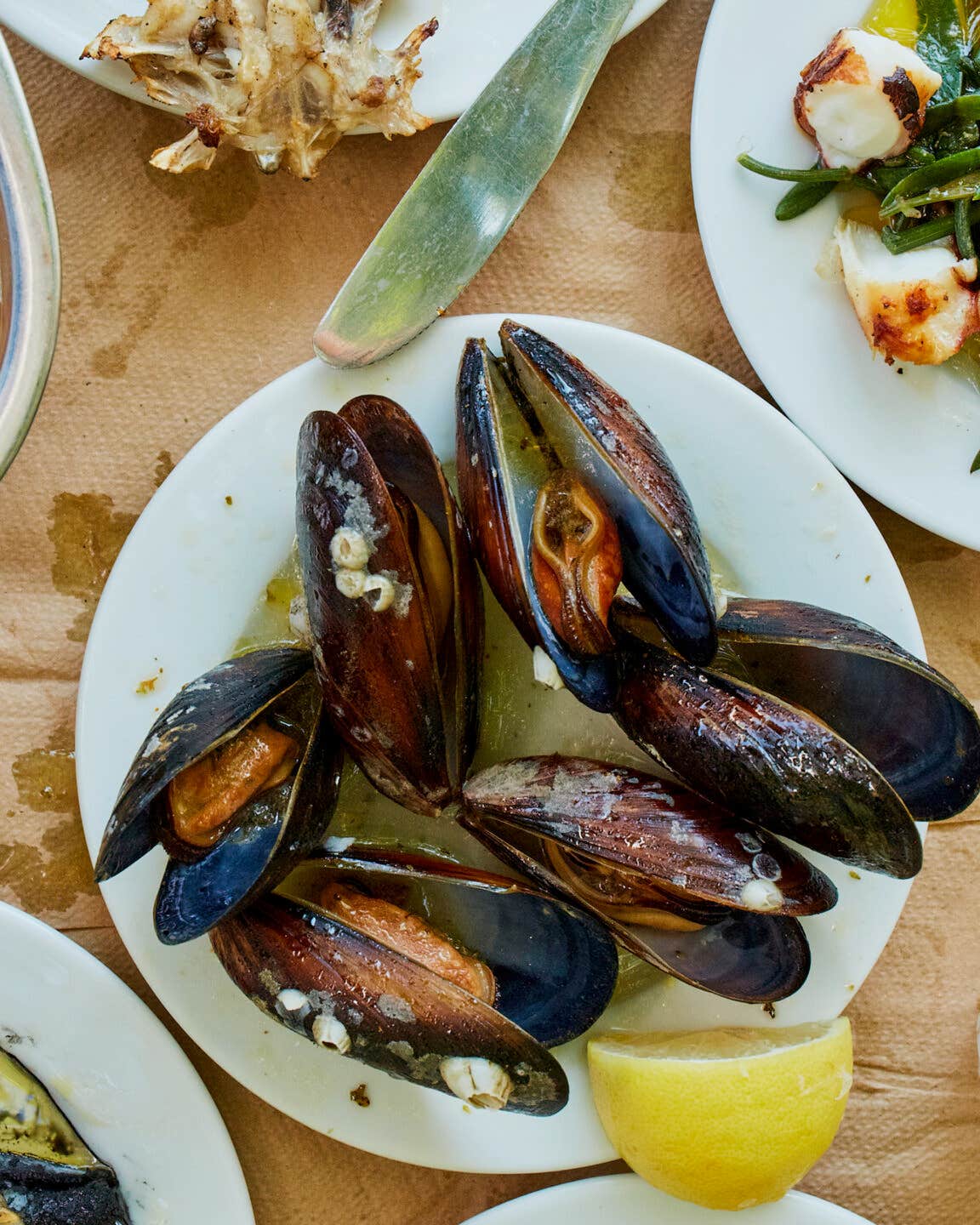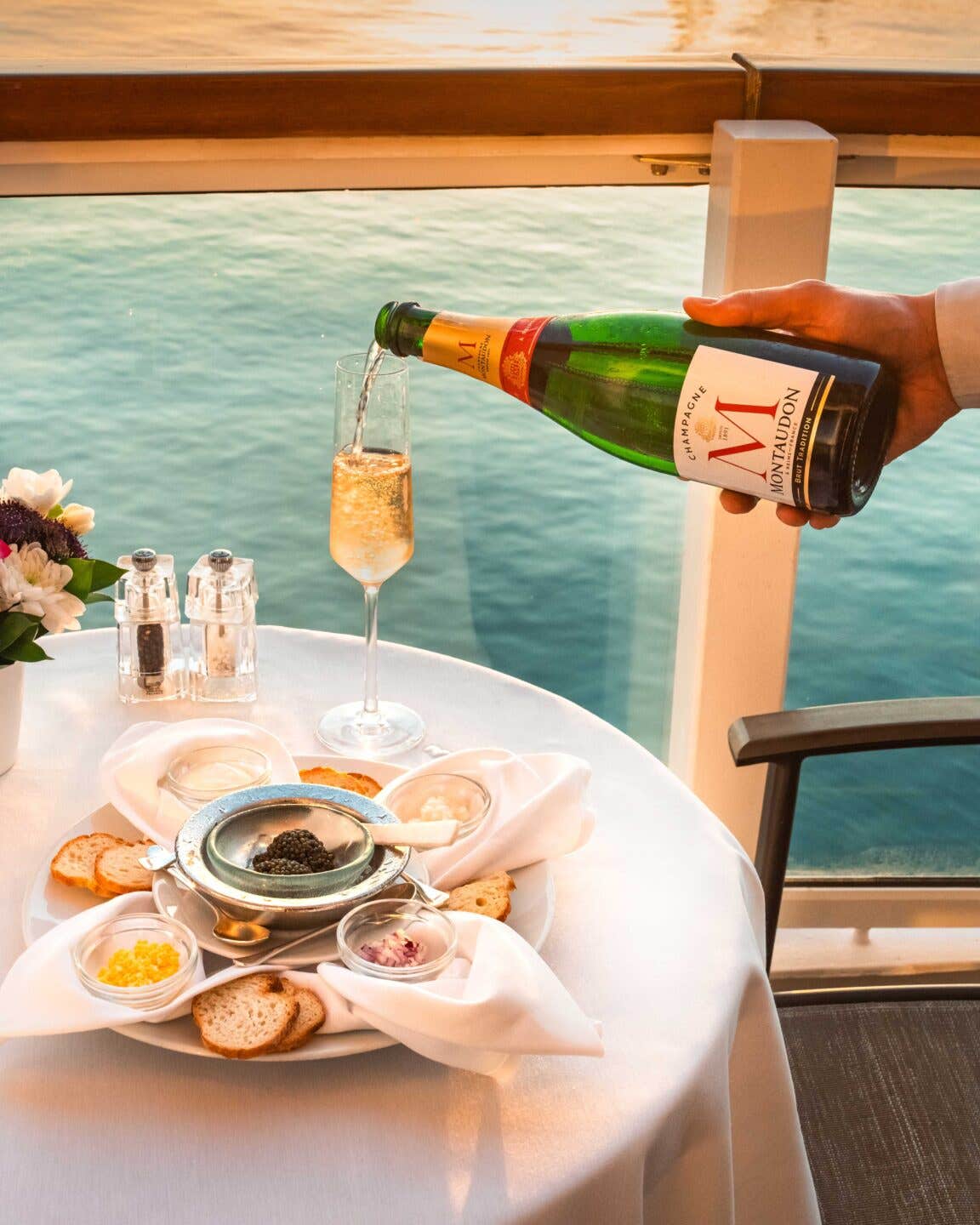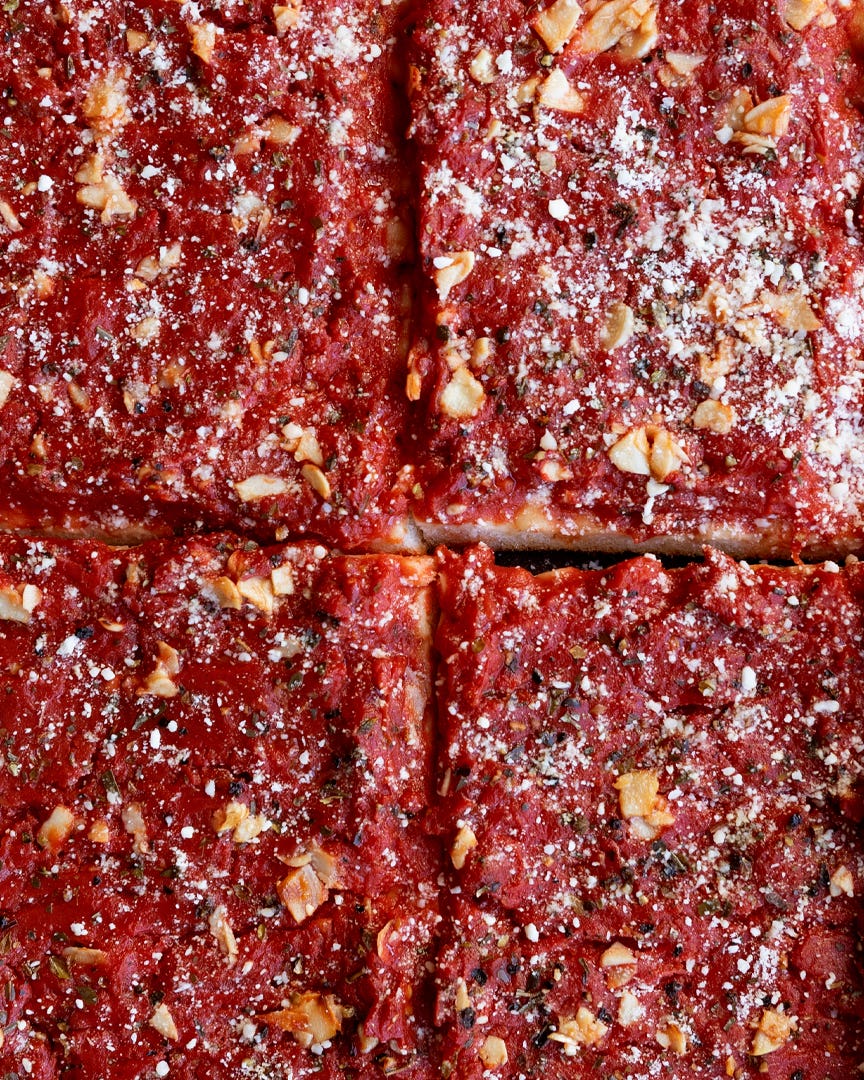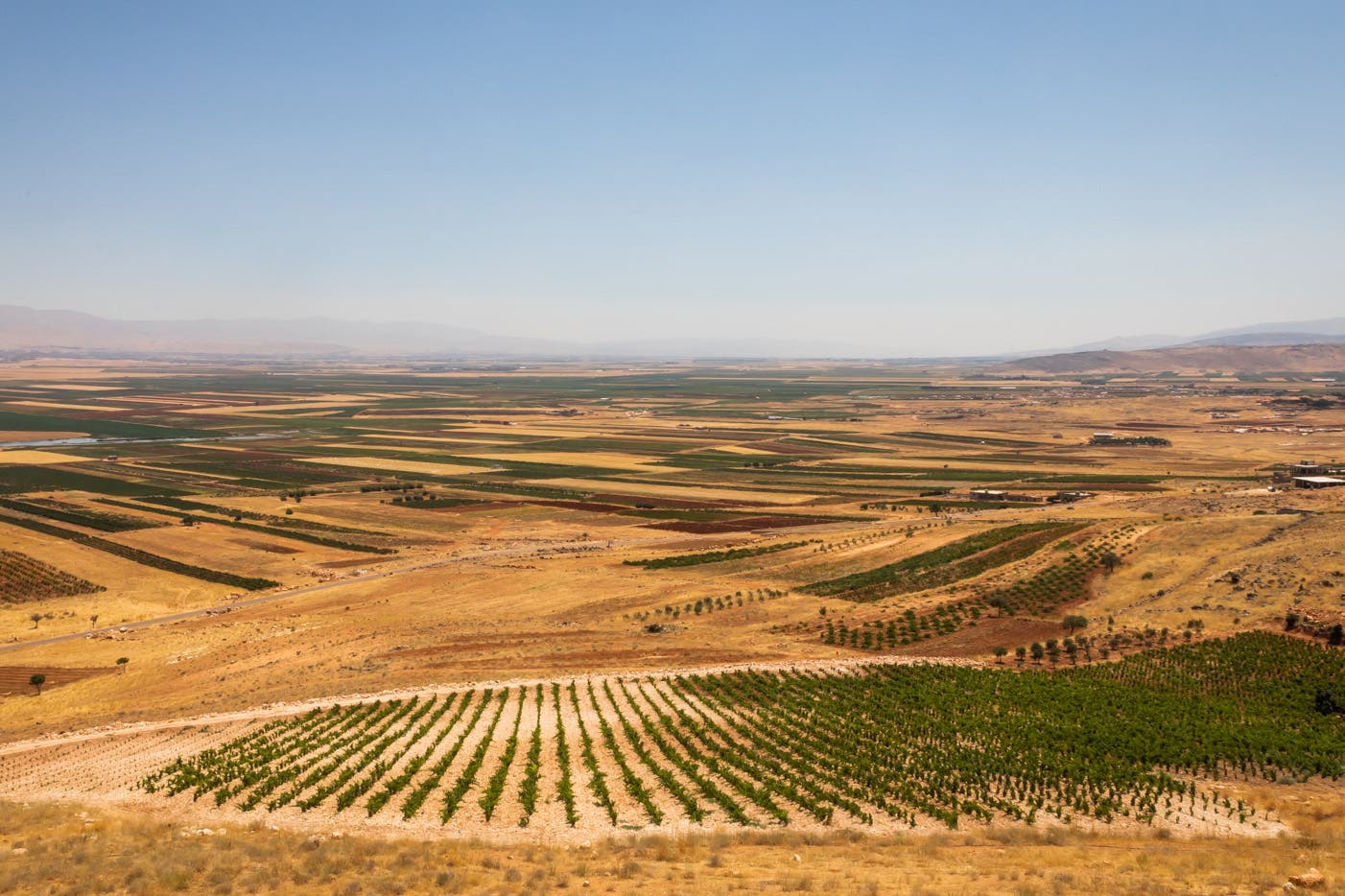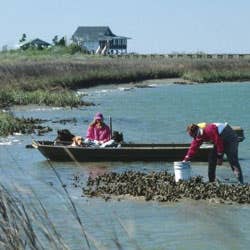
Looking for Lowcountry Cooking
Two friends from "off"—as we Charlestonians designate those not lucky enough to live in our light-drenched, camellia-besotted midst—came to visit recently, looking for some of that authentic Lowcountry cooking they've been hearing so much about lately. Does such a cuisine really still exist? they wondered. And if it does, what is it and where do you find it?
Though I'm a native Charlestonian, and have been eating local cooking all my life, it occurred to me that I really didn't know how to answer them. So I offered to lead my friends on a journey of joint discovery. Together, we went looking for Lowcountry cuisine.
Our quest took us over many miles of cobbled streets and oak-lined roads, through past and present, to historical society, cafe, tearoom, restaurant, and private island. Along the way, we learned lessons in history, sociology, hospitality, and down-home philosophy. Oh, and we ate very well.
Exactly where the boundaries of South Carolina's fabled Lowcountry lie may be debated—but the region extends roughly from Winyah Bay at Georgetown, 59 miles north of Charleston, to the Savannah River in the south, and from the Atlantic Ocean inland to the so-called Fall Line, where the topography and vegetation begin to change, and the first pine-covered red clay hills appear.
The Lowcountry is flat, a wet region of swamps, beaches, abandoned rice fields, grassy savannas, and serpentine, tea-colored rivers. Lush semitropical vegetation flourishes here—banana trees, hibiscus bushes, oleanders. Here too live the palmetto and the live oak, the dolphin and the white-tailed deer, the oyster and the shrimp. The capital of the region, of course, is glorious, sensuous, historic Charleston—arguably the most ravishing city in America, full of charming gardens and handsome pastel period buildings.
While the people of the Lowcountry hold the smug conviction that theirs is a promised land and they are a chosen people, the fact is that the region's history has been a difficult one. For centuries, the Lowcountry has endured hurricanes, earthquakes, fires, plagues, bizarre ice storms, and ruthless floods—not to mention wars and other human conflicts. The area was particularly devastated by the Civil War and sank into nearly a century of ruinous poverty. Once-glorious Charleston became a virtual backwater; Charlestonians were said to be "Too poor to paint, too proud to whitewash," and much of the city, even its more genteel quarters, seemed to languish in a slumlike decrepitude.
The development of Lowcountry cooking reflects the region's changing fortunes. Based on the bounty of the native habitat—quail, ducks, wild turkeys, venison, clams, crab, oysters, fish of all sorts, rice, corn, tomatoes, wild figs, blackberries, and more—it borrowed and adapted dishes from early English settlers, as well as from French Huguenots and Sephardic Jews, and from forcibly imported West Indian and West African slaves—who brought not just ideas about cooking but actual seeds for planting.
In prosperous times, affluent Carolinians traveled abroad and imported exotic spices, fruits, and oils to enhance their local cookery. In leaner times, these same Carolinians simply did without such luxuries, eating whatever was available—but inevitably preparing and serving it in terms defined by their own past experience and their "refinement."
Because the roots of Lowcountry cooking extend so far back into the region's history, we began our search for the cuisine at the headquarters of the South Carolina Historical Society in downtown Charleston. Among the treasures here are rare editions of a landmark American cookbook, The Carolina Housewife . The book was first published in 1847, under the byline of "a Lady of Charleston." This collection of some 550 "receipts" (as recipes are still called locally) with its arcane language and occasionally vague instructions ("break as many eggs as you like") survives today not just as a cookbook but as a charming and revealing social document.
Today it is well-known that the author of the book was one Miss Sarah Rutledge, daughter of Edward Rutledge, a signer of the Declaration of Independence. She hid her identity for a very Charlestonian reason: In those days, a lady's name did not appear in print except to note her birth, marriage, and death.
We asked another Charlestonian lady, a gracious octogenarian named Miss Anna Wells Rutledge—a distant cousin of Miss Sarah's—to guide us through The Carolina Housewife . In 1979, Miss Anna published a new edition of her ancestor's book, and her introduction to the work contains rich information about the early days of Carolina cooking and dining—as well as a number of practical tips designed to help the modern-day reader through the book's more mystifying instructions.
Even so, the book is hardly a practical manual for the contemporary cook. Working with mortar and pestle, sieve and sturdy pot, the "Carolina Housewife" of 1847 could learn "How to Caveach [prepare as escabeche] a Mackerel," "To Dress a Calf's Head in Imitation of Turtle," or "To Make a Dish of Snow." From her kitchen, she could turn out such concoctions as Bops, Zephyrines, Dodgers, Dabs, Jumbles, Marvelles, and Wigs—all of them varieties of biscuits, breads, or tea cakes. The author also includes a receipt "for throwing an illusion over an indifferent dinner, to which company is suddenly brought home, by that notoriously thoughtless person, the husband." Her injunction is brisk: "A clean tablecloth and a smiling countenance."
While her ancestor had concealed her name, Miss Anna demurred in the same spirit when we asked if we could photograph her: Even today, a proper Charlestonian lady's photograph does not appear in the popular press. And when we asked her about Lowcountry cooking, she referred us back to The Carolina Housewife —as if to say that we were unlikely to find that culinary idiom in the modern world.
A friend of ours, Charleston architect Robert Epps, recommended that we lunch at a restaurant near the Historical Society, called the Pinckney Cafe & Espresso. In the Charleston of my 1950s childhood, there were really only two restaurants in town—Henry's and Perdita's. We didn't need more. Charlestonians did not eat out in public, but at home—or at the homes, beach houses, or shooting lodges of friends. That changed with the revival of the local tourist industry in the 1970s; the Pinckney is one of dozens of interesting restaurants that have sprung up in Charleston since then.
Ruth and Scott Fales, the restaurant's owner-chefs, represent the new breed of Lowcountry restaurateurs, committed to using fresh regional, seasonal ingredients. Though Scott's from "off," Ruth hails from up the road a piece. Scott's special the day we stopped by was Sutton's Chicken, a dish of fried chicken with country ham and red-eye gravy, inspired by meals Ruth remembers from her family's homestead in Hartsville, South Carolina—once a working farm and now a retreat where the couple maintains a summertime herb, vegetable, and flower garden. Does the Pinckney serve Lowcountry cuisine? No, and they don't claim to. But it's a simple, genuinely Carolinian restaurant that uses local ingredients and creates delicious dishes out of family memories.
At lunch, I happened to notice in the newspaper that the year's first tearoom had just opened. A tearoom in the Charleston sense is not an established restaurant, but a temporary seasonal phenomenon. It's a tradition dating from the 1920s. Appearing for a few weeks each spring, like the wisteria and azaleas, these tearooms are typically set up in church social halls and run by church ladies as parish fund-raisers.
Ours was held at the historic Christ Episcopal Church (1706) in the suburban community of Mount Pleasant, just outside Charleston. The menu featured such local specialties as shrimp salad, turkey salad, and ham biscuits (little ham sandwiches on small biscuits). But what really caught our attention were the traditional Lowcountry soups—okra and she-crab.
Okra soup, made from (long-cooked) okra and tomatoes, has a hearty, healthy, unassuming quality. She-crab soup, on the other hand, is a pre-cholesterol-awareness masterpiece of self-indulgence, made with crabmeat, butter, cream, and sherry. It takes 12 or 13 female crabs, or "sooks," to yield a pound of crabmeat. Constructing large quantities of the soup thus implies a whole lot of sitting and picking on the part of the volunteer kitchen ladies. Nobody seemed to mind the work, though. In fact, they seemed proud of the trouble it took—and proud that they were continuing an old ritual, helping safeguard an old tradition. When we sat down to eat, several of the women hovered over our table, wanting to know how we liked the soups. We loved them.
Another true Lowcountry tradition is the oyster roast. An oyster roast is more an event than a dish—a big party where locals armed with knives and gloves dig into piles of oysters, slurping them up in heroic quantity. I called my friend Ben Moise, a state game warden and noted al fresco chef, to ask if he could share some oyster roast lore with us. To my surprise, he responded by offering to actually prepare an oyster roast for us the next day on his own island.
Moise Island is a quarter-acre piece of land on the Intracoastal Waterway in the Cape Romain National Wildlife Refuge area, about 20 miles north of Charleston. Moise bought it in 1985, and now has a modest cabin there, with a simple cooking pavilion that has a propane stove. He calls the retreat "my Valium."
When we arrived on the island by motorboat, we found Moise already cooking beneath a brilliant blue Carolina sky, roasting both genuinely wild oysters (which are very rare in the United States) from his waters and cultivated ones from his own oyster beds in the saltwater creek that runs along one side of his island. Cooked in their own juices, the oysters came off the fire steaming—moist and tender, sweet and creamy, their liquor vividly briny. They made us very happy.
But there was more to come: Moise also made us a kind of seafood boil called Frogmore Stew, named for a town on the island of St. Helena, near Hilton Head, about 80 miles south of Charleston. The stew is a big pot of shrimp, crawfish, and crabs, with corn on the cob and sausage added. Moise flavors his with a special "boil mixture" of spices. He cooked it on his propane stove, then lined a large colander with crushed crustacean shells and poured the stew into it. He put the colander on his long wood-plank table, and we dug in—eating with our hands and sipping beer. We finished every bite.
As we ate, we asked Moise if an authentic Lowcountry cuisine still existed. He didn't seem to think so. In our heterogeneous culture, he said, true localism—including truly local cooking—is a thing of the past. Gone with the wind are the old labor-intensive methods of preparation, the huge staffs needed to prepare elaborate meals, the old agricultural ways, even some of the crops themselves. "Lowcountry cooking today," he concluded, "is more of a state of mind or an attitude than a culinary tradition."
That evening, on Moise's recommendation, we drove 40 miles south of Charleston to tranquil, rural Edisto Island, to sample another variation of Lowcountry attitude at a restaurant called the Old Post Office. Chef Philip Bardin specializes in what he calls "Lowcountry menus with a modern twist." We sampled his Orangeburg onion sausage (from a town northwest of Charleston famous for its sausage-making), which he served with black bean sauce, and then his fried quail with duck-stock gravy.
Bardin readily admits that his version of Lowcountry cooking is not authentic. "That would be too time-consuming for a restaurant," he says. "But we do have a commitment to keeping things simple and uncontrived." He also suggested that we might learn more about Lowcountry food by talking to another local chef, Miss Daisy Brown, who cooks at a cafe in the BP gas station on the island, preparing such Southern classics as red rice, squash casserole, collard greens, cornbread, and barbecued spareribs.
Miss Daisy cooks skillfully—she can judge the doneness of rice by the weight of a spoonful of it, or the saltiness of a dish by the color of steam emanating from the pot—and with an old-fashioned philosophy. But what she cooks, she says, is not Lowcountry food—it's just food. "Food is good," she explains. "Food is love. Food is one of the best ways to bring people together and tell them you love them. I always bless the food I cook and the people who are going to eat it."
Did we find Lowcountry cooking on our quest? Yes and no. We found a renewed respect for traditional ingredients, like okra, grits, wild oysters, and she-crabs. We discovered a passion for experimentation and invention—the kind of passion that must have animated the region's original cuisine. And we certainly found great hospitality and generosity. We're not sure we found Lowcountry cooking—but what we did find was a revived and thriving Lowcountry culinary spirit.
Keep Reading
Continue to Next Story
